Fruits from ASEAN countries have entered the Chinese market more efficiently and conveniently in recent years.
This favorable trend is attributed to the full implementation of the Regional Comprehensive Economic Partnership (RCEP), the China-Laos Railway, the New International Land-Sea Trade Corridor (ILSTC), and other projects promoting regional connectivity, along with the rapid development of e-commerce platforms and cross-border cold-chain logistics systems, as well as China's favorable policies and measures facilitating customs clearance.
People's Daily reporters recently visited Chanthaburi province, the renowned fruit capital in eastern Thailand, Youyi Port in Pingxiang city, south China's Guangxi Zhuang autonomous region, and the China-ASEAN (Chongzuo) Fruit Trading Center in Chongzuo city.
They tracked the journey of ASEAN fruits from their places of origin to the dining tables of Chinese consumers.
Chanthaburi province, Thailand
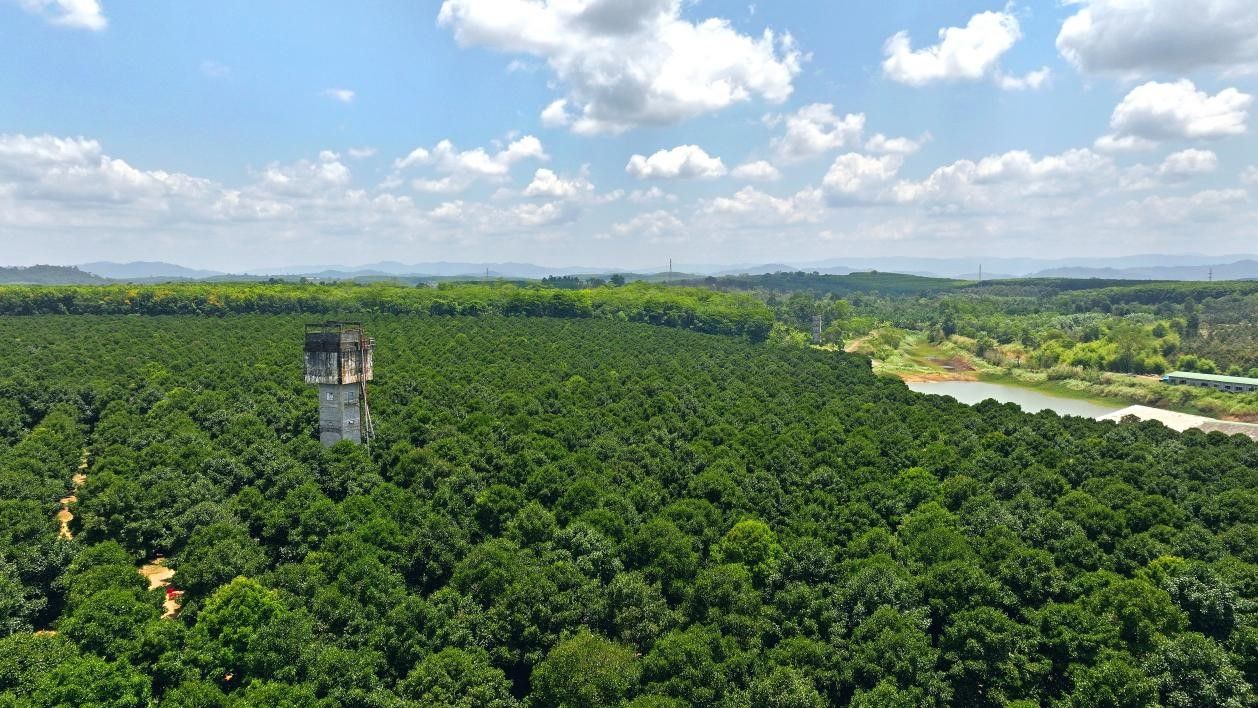
Photo shows a distant view of a mangosteen orchard in Chanthaburi province, Thailand. (People's Daily/Bai Yuanqi)
At 10 a.m., People's Daily reporters arrived at a mangosteen orchard in Chanthaburi province, where they received a warm welcome from an 84-year-old woman named Mary. She handed freshly picked mangosteens to everyone.
"These mangosteens are all picked from century-old trees. We have over 70 such old trees in our orchard," said Mary's daughter, Chenisa.
Before the break of dawn the next day, the Thai Mangosteen Association (TMA) headquarters was brightly lit and bustling with activity.
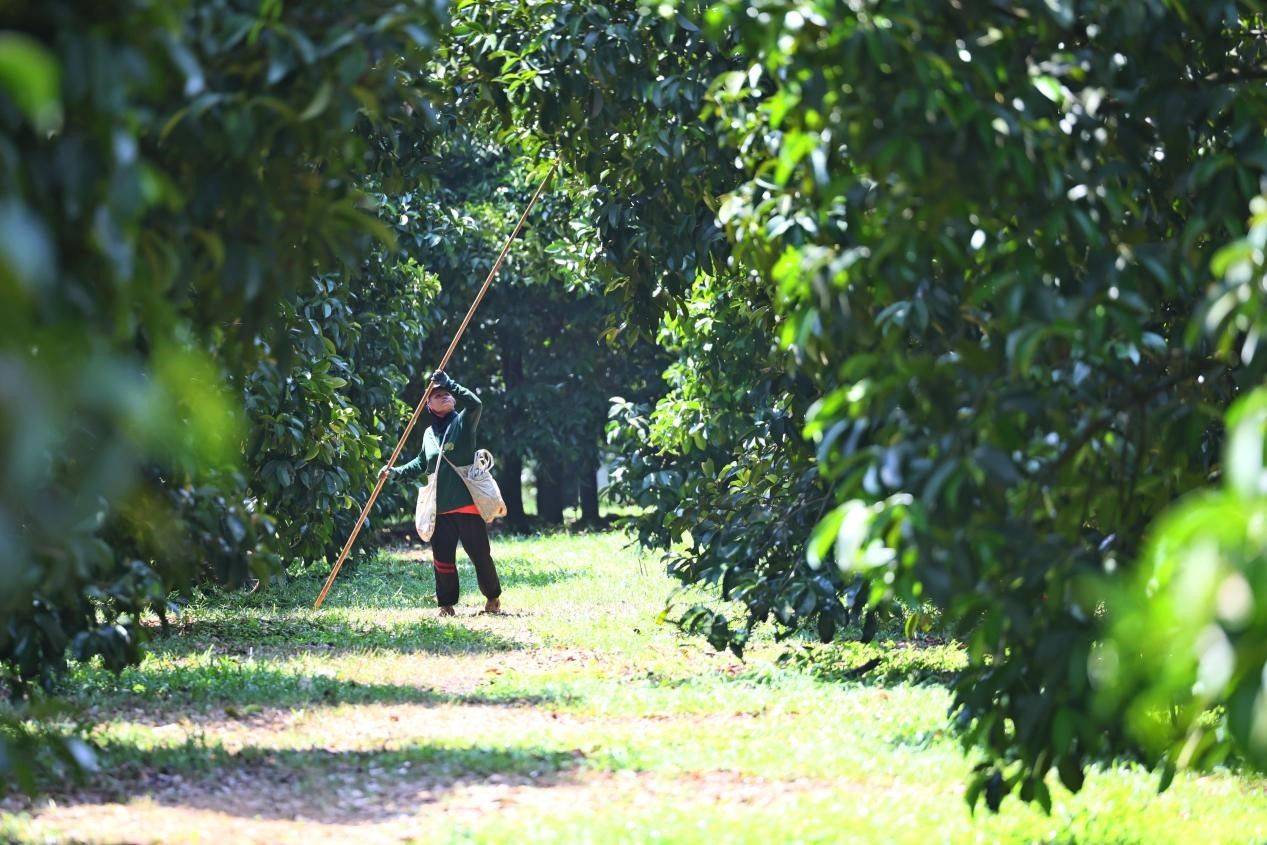
A worker picks mangosteens with a long pole. (People's Daily/Bai Yuanqi)
"Farmers have been bringing in the day's mangosteen harvest since sunset," explained Pippat, vice president of the TMA. In less than two years since its establishment, the association has already gathered a membership of over 1,000 farmers.
"The huge Chinese market has brought opportunities for our rapid development," he added.
At 6 a.m., several trucks were waiting to unload and transfer goods outside a mangosteen processing factory in Chanthaburi.

Workers transfer mangosteens outside a mangosteen processing plant in Chanthaburi province, Thailand. (People's Daily/Bai Yuanqi)
Inside the processing workshop of the factory, giant sorting machines rumbled as over 10 workers carefully checked each mangosteen passing by, sorting them according to size and ripeness.
"These fruits are destined for China. In recent years, our products have been selling increasingly well, largely because of the vast Chinese market," said Nye, one of the workers.
"Eastern Thailand's Chanthaburi, Rayong, and Trat provinces are major tropical fruit-growing regions especially famous for mangosteens and durians," said Monsit, governor of Chanthaburi province.
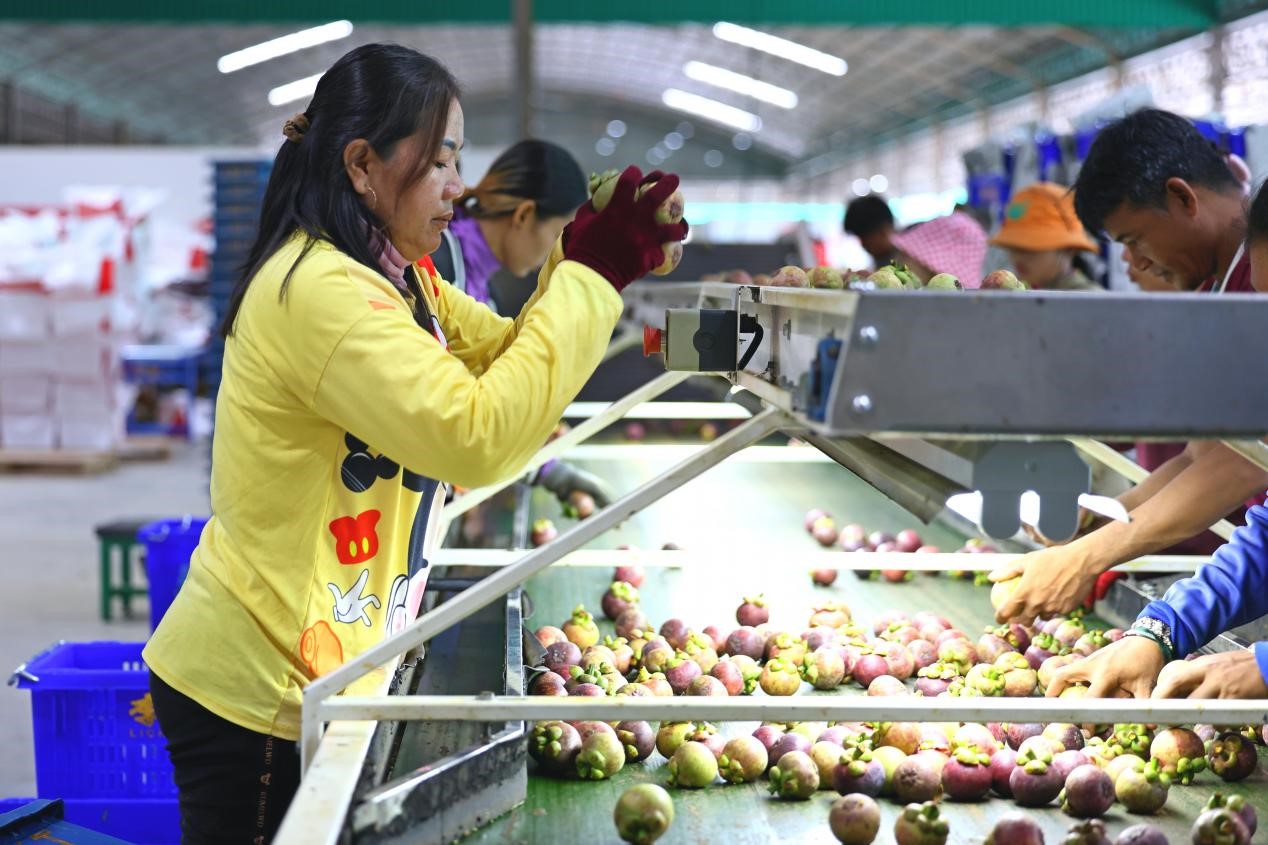
Workers check every mangosteen carefully and sort them according to size and ripeness. (People's Daily/Bai Yuanqi)
The development of the fruit industry in eastern Thailand has created numerous job opportunities, with tens of thousands of local people now working in this industry, Monsit said.
Now, farmers enjoy a better quality of life due to their growing income. Meanwhile, the thriving fruit industry has contributed greatly to local economic and social development, Monsit noted.
"We are looking forward to more and closer cooperation with the Chinese market," added the governor.
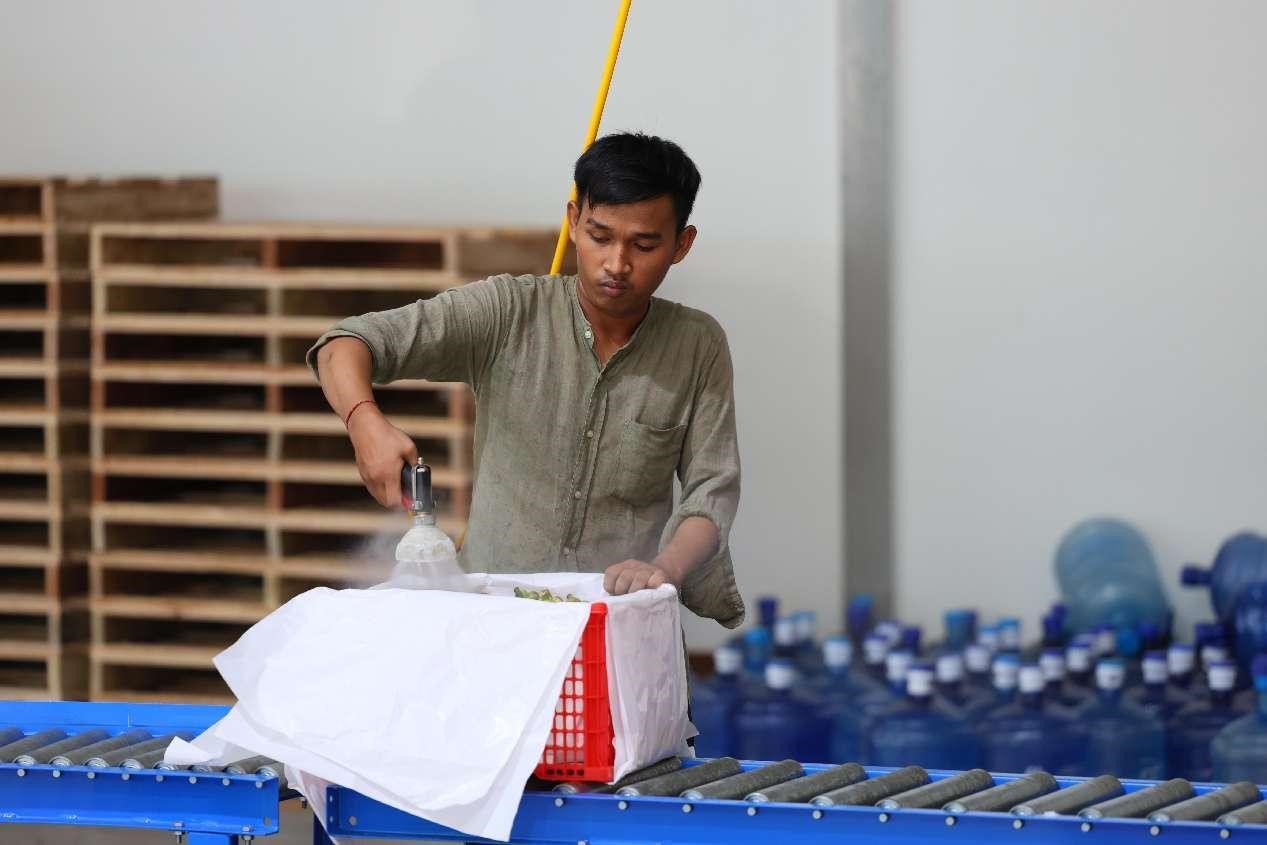
A worker packages fruit in boxes. (People's Daily/Bai Yuanqi)
Youyi Port, China
At 8 a.m., Youyi Port in China's Pingxiang city was bustling with the stream of cross-border vehicles loaded with ASEAN fruits, filling the air with the aroma of fruit and the echoing sound of train whistles.
After pre-declaration, inspection at checkpoints, and weighing, refrigerated truck No. 98C18232 cleared customs smoothly.
Gan Jianxing, a person responsible for customs declaration for this batch of imported fruits, used his mobile phone to log into an app named "smart Youyi Port," where information such as license plate numbers, cargo classification, and inspection platform codes was clearly displayed.
In an effort to facilitate customs clearance for imported fruits, Youyi Port has established a durian-dedicated channel and a green channel for imported and exported agricultural products, according to Huang Feifei, a customs officer from Youyi Port.

Customs officers check imported durians at Youyi Port in Pingxiang city, south China's Guangxi Zhuang autonomous region. (Photo/An Xiaomi)
The port has also introduced an intelligent auxiliary management system for inspection, Huang noted.
"Currently, the system automatically assigns inspection tasks to all 76 inspection platforms at the port. Refrigerated trucks carrying imported fruits are given priority in inspection, leading to a significant increase in the overall vehicle turnover rate," Huang explained.
Youyi Port is China's largest land port for fruit imports and exports. In recent years, the port has been advancing its intelligent transformation, achieving remarkable results.
Inspection space turnover efficiency has increased by 35 percent, and the quarantine processing time has been reduced by nearly 70 percent at the port.
In 2023, fruit imports through Youyi Port totaled 23.92 billion yuan ($3.3 billion), a year-on-year increase of 262.9 percent.
The full implementation of the RCEP and the accelerated development of the ILSTC have helped streamline cross-border transportation procedures, leading to a notable enhancement of customs clearance efficiency and substantial time and cost savings, contributing to the booming fruit trade between ASEAN and China, said Pattama Namwong, president of the TMA.
China-ASEAN (Chongzuo) Fruit Trading Center
Stepping into the China-ASEAN (Chongzuo) Fruit Trading Center, reporters were greeted by digital screens showing live updates of fruit transactions.
As of June 30, 2024, the online platform of the center had completed a cumulative total of 174,654 international fruit trade transactions, with a trading volume of nearly 3.41 million tonnes and a transaction value of around 15.04 billion yuan.
"Thanks to the combination of an online trading platform with traditional trading models, ASEAN fruits can flow more smoothly to China," explained Tan Weiping, an executive of the center.
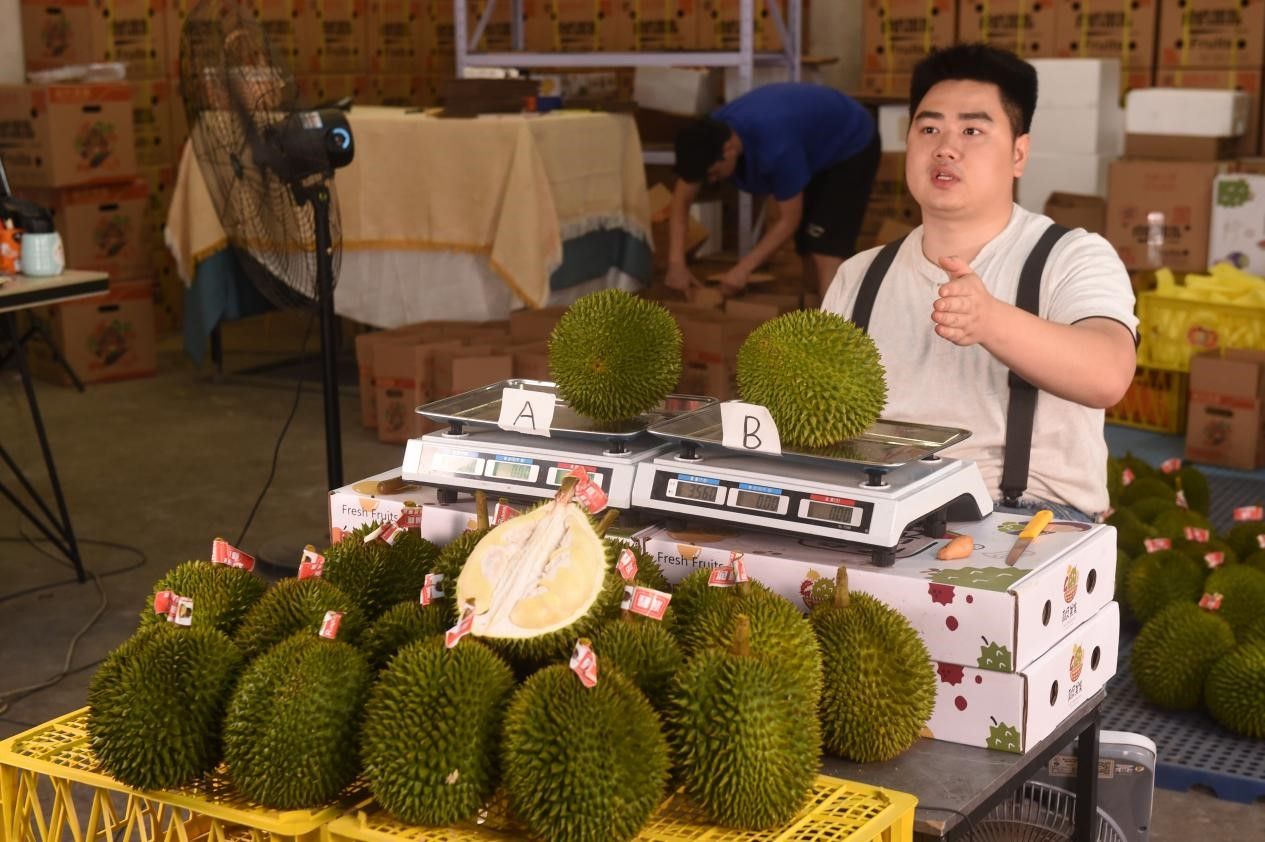
A young man named Ye Hongsheng sells durians via livestreaming at the China-ASEAN (Chongzuo) Fruit Trading Center in Chongzuo city, south China's Guangxi Zhuang autonomous region. (Photo/An Xiaomi)
Ye Hongsheng, a 24-year-old man who sells fruits via livestreaming at the center, said that ASEAN fruits like durian and jackfruit are selling well, and langsat and mango have also become popular choices for consumers looking to try something new.
"Now more and more consumers like to shop during livestreaming shows, and we've gained quite a number of loyal online followers," he said.
"We help sell durians from over 1,000 mu (about 66.67 hectares) of orchards in Chanthaburi, Thailand, and we also cooperate with growers in Buon Ma Thuot city of Dak Lak province, and Tien Giang province in Vietnam on durian planting," said Lou Jiaoyue, Ye's mother, while checking the durian import list.
Sources say that fresh fruit transportation primarily relies on cold-chain air freight and road transport.
Fresh fruit can generally be delivered to central China's Hunan and Hubei provinces within 12 hours, while transportation to east China's Jiangsu and Zhejiang provinces and the country's northern regions can typically be completed within 48 hours.
"The trade relations between China and ASEAN are becoming increasingly close, and Chinese consumer demand for ASEAN fruits has surged. We are optimistic about the market prospects of ASEAN fruits in China," said Lou.
编辑:齐悦